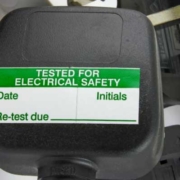How To Check Office Electrical Wiring
Electrical safety is an important aspect of any workplace. Not only does it ensure the safety of employees and visitors, but it also safeguards expensive office equipment from unnecessary damage. It’s essential to know how to check office wiring in order to make sure that your office is safe and date with all the latest government legislations.
So how do you go about checking office electrical wiring? The best way to start is by having an experienced electrician do a thorough inspection of the office. The electrician will check all of the wiring, as well as any individual electrical components, to make sure that everything is safe and up-to-code. Additionally, they can also advise on how to upgrade or repair any faulty electrical components.
As a property owner you’re required by law to carry out an EICR test once every 5 years. Additionally, businesses are required to carry out periodic PAT Tests for all the the electrical appliances used by employee or customers. It’s important to realise, the responsibility of arranging an EICR test can fall onto the tenant. Often commercial leases will have a clause that requires the tenant to have an EICR once every 5 years.
How to check office wiring
We strongly recommend that all electrical work must be carried out by a fully qualified individual with all the correct accreditations and insurance. Commercial electrics differs from house electrical system. For this reason, you should also check that the company/individual you hire has the additional qualifications to work in commercial buildings. To stay on top of your office electrical wiring, there are some checks you can carry out to ensure your employees remain safe.
Visual inspection
- Check all sockets for signs of damage. Look out for yellowish burn marks, broken/cracked sockets
- Check the amount of appliances plugged into each socket. Extension leads should not be used to power multiple high wattage appliances.
- Check all visible wiring for signs of damage. If the wiring is frayed, has visible internal wires, or burn marks it should be replaced immediately.
- All External leads should have surge protection.
- Check all plugs. Loose plugs should screwed tightly. Plugs with burn/scorch marks should be unplugged and replaced.
By following these steps and taking the necessary precautions, you can ensure that your office wiring is safe and up-to-code. Not only will this keep your employees and visitors safe, but it will also help protect your valuable equipment. Furthermore, if you ever need to upgrade or repair any electrical components in the future. Having an up-to-date system in place can make that process easier and more cost-effective. Taking the time to check office wiring now can save you time and money down the road.
Office Electrical Wiring – Testing
EICR Test
An Electrical Installation Condition Report (EICR) is the process of testing and inspecting your office’s electrical wiring to check for faults or damage. The EICR test involves a detailed visual inspection as well as various diagnostic tests, such as testing the insulation resistance and Earth continuity, to identify any existing or potential problems.
When carrying out an EICR test, qualified electricians will check for any electrical faults that could be potentially dangerous such as loose connections, exposed wires or overloaded circuits. The tests also involve checking all the sockets and switches in your office to ensure they are wired correctly and that no cables are damaged.
Carrying out regular EICR tests is essential for ensuring the safety of everyone in your office, as well as protecting any valuable equipment. Checking your office’s electrical wiring can also help you to save money by identifying and fixing minor faults before they become major problems.
PAT Testing
A PAT (Portable Appliance Testing) test is a very important procedure that is done to ensure the safety of electrical devices and wiring in your office. The test uses an appliance tester to assess the condition of all electrical appliances or equipment. This includes how insulated and how well it is wired. This will help you determine if there are any issues that need to be addressed before any device is plugged in and used.
To perform a PAT test, the tester will first inspect the electrical wiring of your office by visually inspecting all areas where electricity is used or stored. This includes looking for signs of wear, corrosion, and other problems that may indicate an issue with how it has been wired. The tester will then perform more detailed tests on the wiring, such as checking for correct polarity, loose connections, and other potentially dangerous issues.
Finally, the PAT tester will measure how much electricity is present in each appliance or device to make sure it meets the required safety levels. This is an important step that can help identify any devices that may potentially be hazardous if used. If any issues are found, the tester can provide advice on how to fix them or even recommend an electrician to do the job.
Conclusion
PAT tests & EICR tests are a great way to ensure your office wiring and appliances are safe for use. By using a professional tester and following their instructions, you can help ensure your office is safe and running efficiently. With regular testing, you can make sure that any problems are quickly identified and rectified, so your office remains a safe place to work. Our team at EIS have great electrical knowledge. From small commercial offices to warehouses, we can help you maintain the safety of your business. Call our sales team now for additional information and free quotes.





